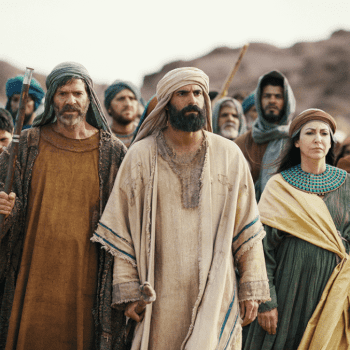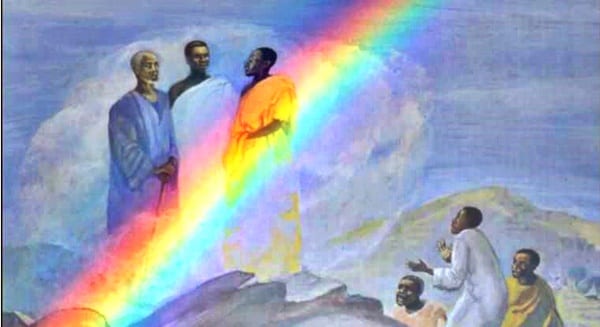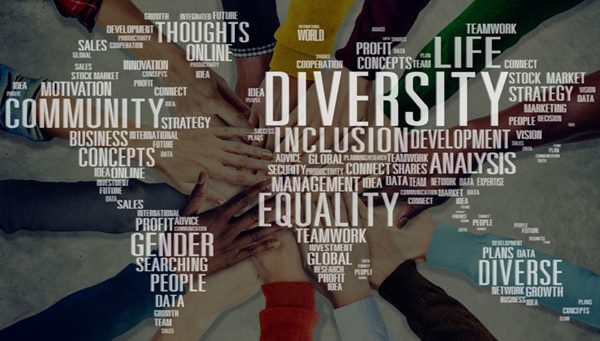It’s about time Sesame Street, a children’s show with a reputation for teaching compassion and inclusion, added recurring gay characters to their long roster. Bert and Ernie just don’t cut it.
This is not to say that I don’t appreciate the undeniably adorable odd couple that has been a core part of the show since its inception. Bert and Ernie are an iconic duo by any standards, and this pair is, without a doubt, a wonderful model of love and affection for children. But is their relationship platonic, or are they life partners in a committed romantic relationship? I don’t think this question needs a definitive answer, and in this case, I believe the ambiguity is an asset. But a show that recognizes all kinds of families is long overdue for one that includes same-sex partners.
Bert and Ernie and the Rainbow Connection
Over the weekend, the perennial debate over the sexuality of Sesame Street’s beloved best buddies was seemingly settled – and then unsettled, and then resettled – in a whirlwind of articles and retractions and tweets that has brought mixed reactions from fans and critics alike. For some, the assertion by the show’s longtime writer, Mark Saltzman, that he used his own relationship with his partner, Arnold Glassman, as inspiration for his portrayal of Bert and Ernie, was a welcome affirmation. For others, it was scandalous.
What it was not, despite headlines to the contrary, was confirmation of Bert and Ernie’s homosexuality. Mark Saltzman is one writer among several for these characters, and writers draw inspiration from their lives and experiences. Saltzman never claimed that Bert and Ernie were officially gay, but that he personally saw them that way and wrote them with that in mind. His admission is welcome news for anyone who likes to imagine them as a positive, healthy depiction of a same-sex couple. His story is heartwarming and enlightening to all fans, from those who hear it and say “I knew it!” to those who might say, “I never knew that, but this adds a dimension to my understanding of them.” But there is not canonical reference to their sexual orientation, because they do not have one. As Sesame Workshop has confirmed:
… Bert and Ernie are best friends. They were created to teach preschoolers that people can be good friends with those who are very different from themselves. Even though they are identified as male characters and possess many human traits and characteristics (as most Sesame Street Muppets™ do), they remain puppets, and do not have a sexual orientation.
This official explanation may upset some queer fans and allies, but it is an honest and appropriate response to the speculation over Bert and Ernie’s relationship. Young children begin to understand their gender identities and even sexual orientations early on, but they are far from identifying with characters who live together in a romantic relationship. But they can identify with friends. They can understand what it means to care about someone who may be different and may even drive them a little crazy. Without an official sexual orientation, Bert and Ernie can grow with their child audiences. Later, older children, teenagers, and adults can look back on them and, if they so choose, someday they’ll find it, the rainbow connection. Or they may just see a mirror into their own lives with a quirky and complementary friend or roommate. The possibilities are open.
What is less fortunate is the reaction of original voice actor and conceptual artist for Bert, Frank Oz, to the story. Though he didn’t mean to be disparaging, he showed that he just didn’t understand the value of representation when he commented, “It seems Mr. Mark Saltzman was asked if Bert and Ernie are gay. It’s fine that he thinks they are. They’re not, of course. But why that question? Does it really matter? Why the need to define people as only gay? There’s much more to a human being than just straightness or gayness.”
Why Representation Matters
To Oz’s great credit, his ensuing Twitter discussion shows that he was humbled and receptive to what representation means to members of the LGBTQ community. It’s a little baffling that he didn’t recognize it already, given that he has worked for so long with a show that is meant to model to children the importance of welcoming all the people in one’s neighborhood. Perhaps that goes to show how deep blind spots can run when we can take acceptance for our full selves for granted.
No one wants to be defined as “only” gay. But we are all made up of our relationships, moreso even than most of us realize. Who we love is an integral part of who we are. Sexual orientation is more than attraction and desire and the intimate actions that may spring from it. It is about who one is willing to make a lifetime commitment to, build a family with, share the depths of the heart and mind and soul with. Few people would define themselves as “only” straight, but the ability to openly raise a family, hold the hand of a lover in public, show and receive affection, simply be accepted… this is all so easily taken for granted in a society that not only accepts but encourages (smiles upon, caters to, builds entertainment and advertising industries off of) romantic and sexual expression between men and women. Few who take it for granted can truly fathom what it would be like to be told, implicitly and explicitly, that we are not welcome to love those we love. A lack of representation, in a society in which heterosexual romance and family life is celebrated, sends exactly that message.
In a society where homosexuality and various expressions of nonconformity to gender expectations have been met with social, cultural, and religious disapproval and hostility, people who identify as queer in one way or another, or people who question their orientation or the nature of their gender, need affirmation that they are loved, accepted, and valued for all that they are. Unfortunately, the message that some ways of being and loving are not tolerated is planted early on as much by what we don’t see as what we do. A world in which gender non-conforming or same-gendered partners are shunned or made to hide may go unnoticed to many. But those who grow up wondering if they can ever be who they are, or ever find love in a world in which they and those who may love them are forced to hide, notice.
Building A Smarter, Stronger, Kinder World
The only way to build a world in which we can all grow into our fullest selves, which means our interconnected selves, is by welcoming everyone with celebration of all that makes us who we are. Sesame Street does this by celebrating characters – human and Muppet – of different colors and cultures and personalities and circumstances. Children see and learn from this. And they would benefit by seeing a loving same-gendered couple welcomed and loved by humans and Muppets alike.
Bert and Ernie’s affectionate relationship is not explicitly romantic in nature, and this is appropriate as children see themselves in the Muppets. But Sesame Street from the beginning has also featured adult role models, some of whom are married. Children of same-gendered parents would feel a subconscious (or fully conscious) affirmation to see parents like theirs featured. Other children probably wouldn’t think much of it at first, but as they grow, they would be more likely to be accepting, or self-accepting, if they recognize same-gendered love as one of love’s healthy and natural expressions. Without showing anything that children are not developmentally ready to process, Sesame Street could simply make two married women or men a part of their large and diverse family. In doing so, they would be taking a huge step toward making many current and future families feel welcomed and affirmed.
As a show that has spanned several generations, holds nostalgic value, and has been instrumental in child development since the grandparents of today’s youngest generation were children, Sesame Street is uniquely positioned to build a smarter, stronger, kinder world for everyone. It has already taken some first steps by featuring gay and lesbian couples on Elmo’s world, but to bring recurring gay characters into the mainstream of culture from the very beginning would make an indescribable difference to our society’s perceptions of people who, just like everyone else, want to love and be loved. And none of us yet know what a wonderful world it will be when we can all be our fullest selves, because no one can be their full self in a closet, and until we are all all we can be, none of us are all we can be.
Representation and inclusion is not only how we welcome others, but how we make the best of our world and live into the best of who we are. That’s how we’ll find it, the rainbow connection, for all lovers and dreamers are we.
Image: Screenshot from Youtube: ‘Sesame Street’ Writer Says Bert & Ernie Are Gay | The View















